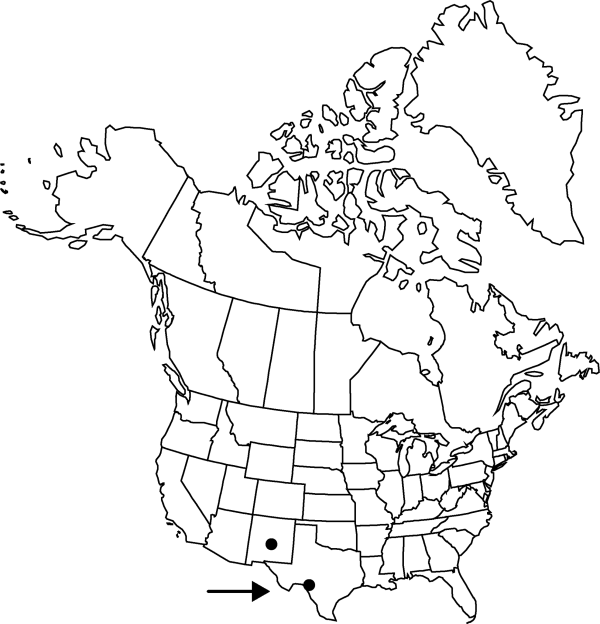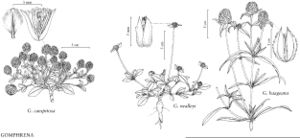Difference between revisions of "Gomphrena haageana"
Allg. Gartenzeitung 21: 297. 1853.
Common names: Rio Grande globe-amaranth
Illustrated
imported>Volume Importer |
imported>Volume Importer |
||
| Line 50: | Line 50: | ||
|publication year=1853 | |publication year=1853 | ||
|special status=Illustrated | |special status=Illustrated | ||
| − | |source xml=https:// | + | |source xml=https://bitbucket.org/aafc-mbb/fna-data-curation/src/2e0870ddd59836b60bcf96646a41e87ea5a5943a/coarse_grained_fna_xml/V4/V4_897.xml |
|genus=Gomphrena | |genus=Gomphrena | ||
|species=Gomphrena haageana | |species=Gomphrena haageana | ||
Latest revision as of 22:01, 5 November 2020
Plants perennial, not cespitose, 2–7 dm; roots primary, fusiform, fleshy. Stems erect, pilose. Leaves sessile or petiolate; petiole to 2 cm; blade green, oblanceolate to oblong-linear, 3–10 × 0.3–1 cm, apex acute to acuminate, mucronate, pilose. Inflorescences: heads stramineous, globose to short-cylindric, 20–28 mm diam.; bractlets crested along keel. Flowers: tube densely lanate; perianth lobes stramineous, linear-lanceolate, 5.3 mm, hyaline, apex acuminate. Utricles ovoid, 2.2 mm, apex acute. Seeds 1.4 mm.
Phenology: Flowering fall.
Habitat: Rocky banks
Elevation: 1200-1500 m
Distribution

N.Mex., Tex., Mexico (Coahuila, Nuevo León, Sonora).
Discussion
Selected References
None.
Lower Taxa
None.
